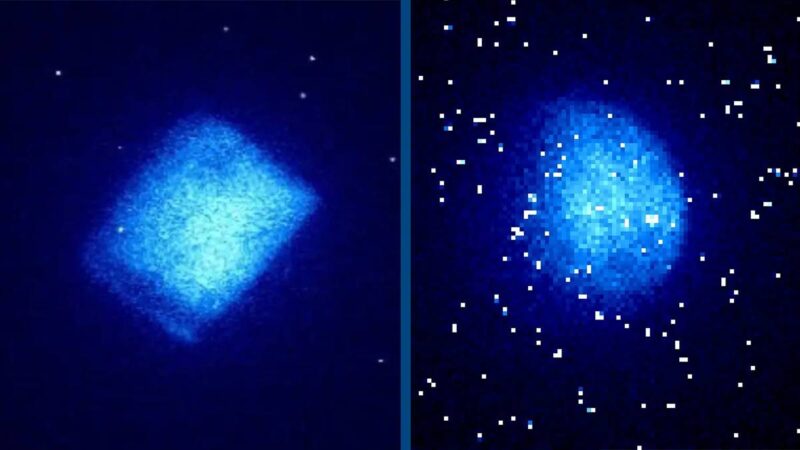Scientists and engineers from the UK Atomic Energy Authority (UKAEA) and the University of Bristol have developed the world’s first carbon-14 diamond battery.
This innovative technology utilises radioactive carbon-14, a by-product of nuclear reactors, to create an energy source capable of powering devices for thousands of years.
How the Carbon-14 Diamond Battery Works
The carbon-14 diamond battery generates power through the radioactive decay of carbon-14, which has a half-life of 5,700 years. This process is comparable to how solar panels convert light into electricity; however, instead of photons, the battery captures fast-moving electrons within the diamond structure.
The carbon-14 used in the battery is extracted from graphite blocks from nuclear reactors and safely encased in a diamond, preventing the release of radiation. Dr Neil Fox from the University of Bristol explained:
“Carbon-14 was chosen as a source material because it emits a short-range radiation, which is quickly absorbed by any solid material. This would make it dangerous to ingest or touch with your naked skin, but safely held within diamond, no short-range radiation can escape. In fact, diamond is the hardest substance known to man, there is literally nothing we could use that could offer more protection.”
The prototype battery measures 10mm x 10mm and is less than 0.5mm thick, offering a compact power solution for specific applications.
Applications and Industry Implications
The durability and biocompatibility of diamond batteries make them suitable for medical devices such as pacemakers, hearing aids, and ocular implants. These batteries could reduce the need for replacements, offering a more consistent power source and minimising medical procedures for patients.
Beyond medical uses, diamond batteries have potential applications in extreme environments, including space exploration and remote Earth locations. Their ability to function for decades without replacement could extend the operational lifespan of devices such as spacecraft, tracking tags, and safety monitors.
Professor Tom Scott from the University of Bristol commented:
“Our micropower technology can support a whole range of important applications from space technologies and security devices through to medical implants. We’re excited to be able to explore all of these possibilities, working with partners in industry and research, over the next few years.”
Elin Bergman, Circular Impact Officer at Cradlenet and Co-Founder and Managing Partner of Nordic Circular Hotspot, added:
“If this type of battery becomes mainstream it can really disrupt the battery sector and make it much more sustainable. Carbon to make batteries is abundant and if they truly are sustainable and create no waste then it really sounds amazing.”
Addressing Sustainability and Nuclear Waste
This technology also offers a method for repurposing nuclear waste. The UK holds approximately 95,000 tonnes of graphite blocks from nuclear reactors. By extracting carbon-14 from these materials, their radioactivity is reduced, simplifying storage and disposal.
Sarah Clark, Director of Tritium Fuel Cycle at UKAEA, emphasised the sustainability aspect:
“Diamond batteries offer a safe, sustainable way to provide continuous microwatt levels of power. They are an emerging technology that uses a manufactured diamond to safely encase small amounts of carbon-14.”




